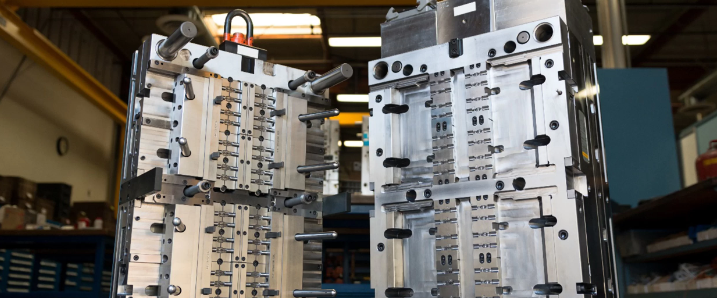
Yes, one plastic injection molding machine can be used with various molds to produce different parts, making it a versatile tool in manufacturing. However, there are several factors and considerations to ensure successful mold interchangeability:
Factors and Considerations
1. Machine Compatibility
- Clamp Force: The machine’s clamp force must be sufficient for the molds being used. Different molds may require different clamp forces to maintain proper sealing during injection.
- Shot Size: The injection unit must have the appropriate shot size to accommodate the volume of material needed for each mold.
2. Mold Size and Mounting
- Mold Dimensions: The physical size of the molds must fit within the machine’s platens and tie-bar spacing.
- Mounting Systems: Standardized mounting systems, such as the SPI (Society of the Plastics Industry) standards, can facilitate the quick interchange of molds.
[elementor-template id=”4330″]
3. Temperature and Material Compatibility
- Heating/Cooling Requirements: Different molds may require specific temperature settings for the mold and the material being processed. The machine must be capable of adjusting and maintaining these temperatures.
- Material Handling: The machine should be able to handle the range of materials that will be used with the various molds, including differences in melt temperature and viscosity.
4. Control Systems
- Programmable Settings: Modern injection molding machines have programmable control systems that allow for the quick adjustment of processing parameters to match the requirements of different molds and materials.
- Automation and Robotics: Automated systems, such as robotic arms, can be programmed to work with various molds, improving efficiency and reducing changeover time.
Practical Steps for Using Various Molds
1. Standardization
- Use Standardized Mold Bases: Standardizing mold bases can significantly reduce the time and effort required to switch molds, as only the core and cavity inserts need to be changed.
- Quick-Change Systems: Implementing quick-change mold systems can streamline the process, allowing for rapid switching with minimal downtime.
2. Maintenance and Preparation
- Regular Maintenance: Regular maintenance of both the machine and molds ensures compatibility and prevents issues during mold changes.
- Proper Preparation: Ensuring molds are prepped and ready before switching, including preheating if necessary, can reduce downtime and improve efficiency.
3. Training and Procedures
- Operator Training: Ensuring that operators are trained in the procedures for changing molds and adjusting machine settings is crucial for smooth transitions.
- Standard Operating Procedures (SOPs): Establishing SOPs for mold changes can help standardize the process and minimize errors.
[elementor-template id=”4331″]
References
- Plastics Technology: Discusses the flexibility and considerations for using different molds on injection molding machines.
- Injection Molding Handbook: Provides detailed information on machine compatibility, mold design, and operational procedures.
- Advanced Technology and Materials: Covers modern technologies and systems that facilitate the use of multiple molds on a single machine.
By addressing these considerations and following best practices, a single plastic injection molding machine can efficiently use various molds, making it a flexible and valuable asset in manufacturing operations
Related Conten: Plastic Injection Molding
 DTG Mould Trade Process |
|
| Quote: | According to sample, drawing and specific requirement. |
|---|---|
| Discussion | Mold material, cavity number, price, runner, payment, etc. |
| S/C Signature | Approval for all the items. |
| Advance | Pay 50% by T/T |
| Product Design Checking | We check the product design. If some position is not perfect, or can not be done on the mould, we will send customer the report. |
| Mold Processing | Send report to customer once each week |
| Mold Testing | Send trial samples and try-out report to customer for confirmation |
| Mold Modification | According to customer’s feedback. |
| Balance Settlement | 50% by T/T after the customer approved the trial sample and mould quality. |
| Delivery | Delivery by sea or air. The forwarder can be designated by your side. |
 |
|

